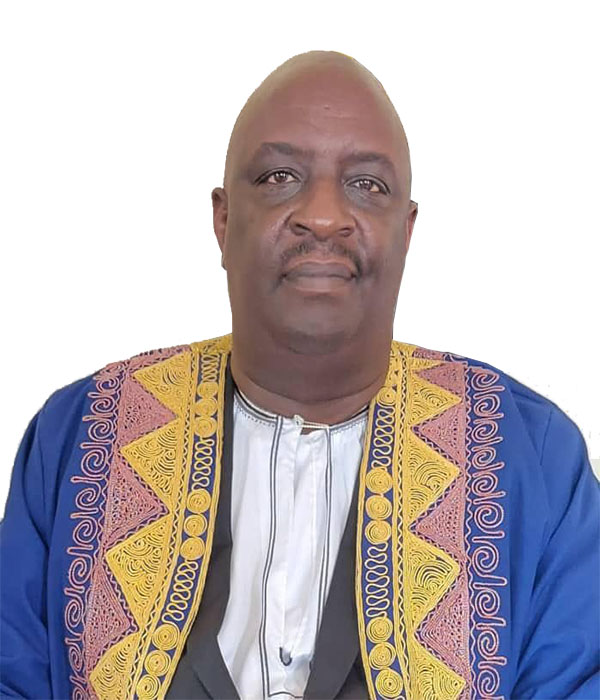At this lime, the lethargy of the Banyoro was apparent to the protectorate government, but the protectorate government officials could not avail any answer in material things. Most of the successive district commissioners who were posted to Bunyoro never dared to work hand in hand with Omukama to solve Bunyoro’s problems. The only fortunate moment came when Bunyoro got a series of sympathetic district commissioners amongst which was J.R.P. Postlethwaite and E. Dauncey Tongue. These found that much could be done to improve Bunyoro by genuinely working together in cooperation with the Omukama and giving him the respect due to his position. It was this changed environment which brought about substantive developments in Bunyoro during the Winyi period. The Winyi period is remarkable because its when things really got going.
The death of the Omukama Andereya Duhaga look place suddenly during the night of 30th March, 1924. He died of heart attack. He was buried at Kinogozi on 7th April. He was succeeded by his half -brother Tito Winyi, whom he had nominated some years before as his successor and who among the sons of Kabalega seemed to have the necessary education and experience. He had been brought up as a child at Ibanda, Mitooma county, Ankole and was educated at Mengo High School and Kings College Buddo. He spent most of the years between 1910 and 1920 in Seychelles acting as Private Secretary to his father Kabalega. In 1920 he returned to Uganda and worked in the District Commissioner’s office for a year. From 1921 until his brother’s death, he was subcounty chief at Bwijanga. Having signed an agreement relating to his future conduct both public and private, he ascended the throne of Bunyoro-Kitara with the traditional empango ceremonies on 12th April, 1924. His appointment was confirmed by the Governor at a general meeting held on 15th May. Omukama Sir Tito Winyi was addressed as Rubazanenkuba Ngambo
Nyingi, who travelled in an airplane of the whiteman from Masindi to Hoima and could speak many languages including Swahili, English, and the language of Seychelles was honoured with the title Rubaza n’ekalamu because he could write and Muzahura Nganda because he was the first king to visit other kingdoms of Uganda. His visit to other kingdoms was remarkable because it broke the tradition which inhibited kings from visiting each other.
When Winyi became Omukama of Bunyoro Kitara, he toured most parts of Bunyoro to which he was comparatively a stranger. His immediate steps were to fight the retrograde attitude which had been shown by most officials in the Bunyoro-Kitara Kingdom who were anxious to exploit the peasants as much as possible for their own advantage. He soon proved to be more popular because he deliberately undertook both the traditional and modern duties of the Omukama.
It is said that in the early days of his reign, the Omukama was on several occasions treated in a discourteous manner by the district commissioners who tended not to have regard for his status. However, with the appointment of Postlethwaite on 27th August, 1927, there came an improvement in relations between the Omukama and District Commissioner. This consequently benefitted the whole of Bunyoro. Because of his wide experience of varying conditions in Uganda Postlethwaite became sympathetic to Kinyoro aspirations in the lost counties. His feelings on this subject endeared him to the Banyoro and made his task in Bunyoro very easy. While District Commissioner, he encouraged tobacco growing in Bunyoro and the British American Tobacco Company started arrangements on how to buy the first crop with the posting of Kentucky Hayes as its first representative. His innovations, however, were abandoned following his departure due to illness and transfer. The sudden transfer of Postolethwaite must have been due to suspicions which the Protectorate Government had about officers who succeeded in forging a bond of sympathy to a particular tribe.
That is why officers were invariably posted elsewhere as soon as they mastered the local languages in particular areas.
In 1928 the Omukama received a white delegation led by Hilton Young. The team was on feasibility study of creating an East African Federation of Kenya, Uganda and Tanganyika. It was officially welcomed in a Rukurato Hall on 17th January, 1928. Later, when the conference dealing with the issue of the EAF was convened in London in 1931, the Omukama sent an envoy Kosiya K. Labwoni to go and explain the stand of the Omukama and the obstacles which lay in the formation of such a federation.
Meanwhile at the same time Sir Tito Winyi undertook to improve relations with other kingdom leaders of Uganda. That is why he ventured very much in paying a lot of visits to these other kingdoms. In 1933, the Omukama set off to visit other kingdoms of Uganda and visited the kingdoms of Ankole, Buganda and Toro. On 2nd May, the Omukama was in Buganda and visited a number of places. He visited the Roman Catholic Mission and toured Buddu which was by that ruled by Rawuli Kiwanuka. He also paid a visit to George Sefasi Kabumbuli Kamuswaga, Ssaza chief of Kooki. Remember Kooki had been an independent kingdom with great historical attachments to Bunyoro until 1896 when she joined Buganda. From Buganda, he proceeded to Mbarara, the capital of Omugabe of Ankole. The two monarchs sat in the royal chairs and conversed like ordinary men. They inspected regalia of Ankole and Winyi was able to see the main royal drum of Ankole called Bagendanwa which was once cut by his great grandfather who had led an expedition into Ankole around 1770. On 8th May, he visited Kigezi in south-western Uganda so that he could see the areas that had once been conquered by his great grandfather Cwa I Rumoma Mahanga. He crossed lake George and saw the boat which was used by Kabalega to cross his men whenever they went for expeditions into Ankole and Rwanda. He went as far as Lake Katwe, and climbed on top of a hill called Katwe so that he could see the Ituri forests.
While returning home, he passed via Mubende, where he climbed up to the top of Mubende hill and tried to draw a picture of the old capital of Ndahura-the Mucwezi king. When he returned home, its when he signed the 1933 Bunyoro Agreement with the Protectorate government. Under the terms of the Agreement the protectorate government undertook to protect Bunyoro and thus Bunyoro was formerly put under British Colonial Rule. The Omukama was to be the head of the native government and had some powers to undertake certain decisions. He could appoint and dismiss ministers which in this case meant the Katikiro, Muketo (treasurer), county and subcounty chiefs. He had to consult the Rukurato and to discuss his proposals with the district commissioner, except for the appointment of Parish chiefs. The district commissioner would initiate a recommendation for the dismissal of any minister or chief while the purpose of the Rukurato was to deliberate upon such matters as might be referred to them by the Omukama.
However, the Omukama made a formal public statement at the signing reserving the claims of Bunyoro to the lost counties. He re-affirmed what Kosiya Labwoni had raised in London in 1931 where he had been attending a joint selection committee meeting, which was studying the problems of closer union of Kenya, Uganda and Tanganyika. Labwoni had complained to the secretary of state for colonies about the loss of his territories, but the reply from the secretary was that it was impossible to go into the question which had long been settled. However, what should be said, is the fact that, the signing of the 1933 Agreement increased formal contacts between Bunyoro-Kitara Kingdom and colonial government. Many important white personalities begun to pay visits to Bunyoro. On 12th July, 1934, Gunliffer – Lister, G.B.E., P.C., M.C., M.P., the British Colonial Secretary paid a visit to Bunyoro. He visited Rukurato Hall on the same day and addressed its members at about 3.00 p.m. On the same day. Sir Bernard Henry Bourdillon, Governor of Uganda conferred on Rukirabasaija Agutamba Tito Winyi Gafabusa, the honour of the Commander of the British Empire (C.B.E.) awarded to him by the king of Britain. The same honours were awarded to the District Commissioner of Bunyoro, Mr. E. Dauncey Tongue, who had played a great role in signing the Agreement. He was awarded an O.B.E. On July 21st 1934, Omukama received a letter from King George of England which bore the signature of the illustrious Prince of Wales and conferred on him the companion of honour, thereby making him a member of the British Royal Guard.
By 1936 considerable developments had taken place in Bunyoro. Road into areas which had previously been inaccessible and barely cultivated were constructed. These roads proved to be very good investments. For instance the road from Hoima to Buseruka from which a foot-path descended the escarpment to Tonya and the road from Kiziranfumbi to Kabale from which descended the escarpment to Kaiso opened the best cotton growing lands in Bunyoro, and facilitated fishing on Lake Albert. Cotton growing in Buseruka, however, had been started by a few Banyoro who had served with the King African Rifles in Nyasaland during the first world war. The escarpment overlooking Lake Albert appeared similar to parts of Nyasaland where they had seen cotton growing. In the course of time their example was followed by other Banyoro and cotton growing flourished. The road from Katesiha to Nyantonzi opened up for the cultivation of the deep red soils of the Waki valley. The Munteme-Musaija Mukuru road served a thickly populated area in Buhaguzi while the Buhimba-Kabale road would ultimately provide a direct road to Mubende.
In May 1939, when the second world war broke out, Omukama of Bunyoro Kitara volunteered for military service and made a formal offer of his men for the defence of the British Empire. His men fought in Kenya, Abyssinia, Somaliland , Egypt, Palestine, Ceylon, Burma, Madagascar, and other areas. After some time, he sent his envoy John W. Nyakatura, Saza Chief, to go and visit the soldiers. He left Bunyoro in 1943 and returned in January 1944. In May 1944, Omukama decided to go for himself and inspect the soldiers. He mostly inspected those who were fighting in East Africa. He was accompanied by John Nyakatura and Policarpo Kwebiha, Omukama’s secretary who visited very many military stations where Ugandans and African soldiers were stationed and returned to Bunyoro in June 1944,
The war created a refugee problem which Bunyoro suffered. On 8th May, 1941, Polish consisting of a few old people arrived in Bunyoro. They had run away from the war. The Omukama and his government being very hospitable decided to house them at Nyabyeya Forestry School which was converted into a camp. The camp contained 4,000 adults and children, fruits, vegetable and eggs from Bunyoro found a good market from the new comers. The agricultural department encouraged the planting of sweet-bananas for sale to the refugees. A large number of Polish women accommodated at the camp created considerable interest outside and amusing tales have been told by people who lived in Bunyoro at that time.
Earlier in 1939, Petero Bikunya who had been Katikiro since 1917 died. He is thought to have been a just and honourable man and the best Katikiro Bunyoro has ever had. He was succeeded by Petro Nyangabyaki who had been Sekibobo. Although many Banyoro did not consider him sufficiently intelligent to cope with the duties expected of a Katikiro, he executed his duties very well. He occupied the post of Katikiro until 1947, when Balamu-Mukasa was appointed Katikiro. Balamu’ s father was a muganda and his mother a Munyoro. He had been brought up in Bunyoro, he occupied the post until 1952 when he was transferred to the Uganda Development Corporation and made a member of the executive council. This deprived Bunyoro of a man of high experience and knowledge of internal affairs. He was replaced by Martin Mukidi, previously the senior county chief (Mukwenda). Mukidi occupied the post from 1953 to 1956 when he was replaced by Zakayo Kwebiha. Kwebiha remained Katikiro until 1962 when he was replaced by Metusera Katuramu, the last Katikiro of Bunyoro Kitara.
In the meantime, the Banyoro had not forgotten the lost counties. In 1943 the Omukama petitioned the secretary of state for the colonies of their return. The reply to this and the subsequent petitions in 1945,1948,1949 and 1954 and to the representation made by the Mubende-Bunyoro Committee in 1951,1953, was invariably that the secretary of state could not alter a decision which had been reaffirmed on many occasions and that the boundaries laid down in the 1900 Buganda Agreement could not be altered in favour of Bunyoro.
In 1953, the governor of Buganda Sir Andrew Cohens visited Bunyoro and had an important discussion on the future constitutional developments of Bunyoro in light of the recommendations of the Wallis report. These discussions were followed by others in 1954 between Prof. Sir Keith Hancock and Sir Tito Winyi. This resulted into the signing of another agreement between Bunyoro and the Protectorate government in 1955. The Agreement was signed by Sir A.B. Kohen, K.C.M.G. Governor, Sir Tito Winyi, Omukama of Bunyoro Kitara, R. Dreschfield, Attorney General, L.M. Boyd, Secretary for African Affairs, Sir G.E. Duntze, Bt., Provincial Commissioner Western Province and K.P. Gower, District Commissioner Bunyoro, and M.D. Martin the Katikiro. Others were Laurent Muganwa, Omularamuzi, E.N. Kabyanga, Omuketo, E.R. Mucwa Mukwenda Bugahya, Kaijamurubi, I.K. Majigo and K. Balya. At the signing of the agreement, the Omukama once again made a formal public statement reserving the claims of Bunyoro to the lost counties. According to this agreement the Rukurato would for and on behalf of the Omukama carry on the government of the Kingdom of Bunyoro Kitara. The Katikiro would be elected by the Rukurato and would be appointed by the Omukama subject to the approval of the Governor. Parish chiefs would be appointed by the Omukama in conformity with the advice of an appointments committee of the county council in which a vacancy existed. Hence this agreement reduced the powers which the Omukama used to exercise because Bunyoro was now ruled by the District Commissioner and the Katikiro as the elected head of the Rukurato. The Mukama became a constitutional monarch on the West Minister Pattern as his appointments became more subject to the Rukurato in the colonial government.
KATIKIROS OF BUNYORO – KITARA 1917 -1967



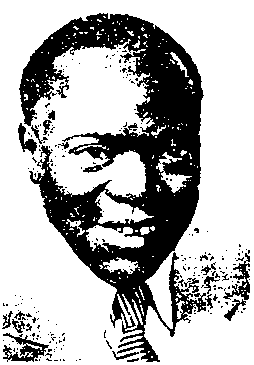
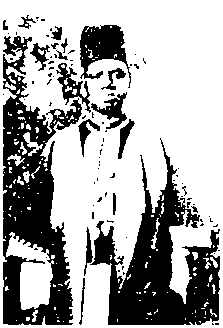

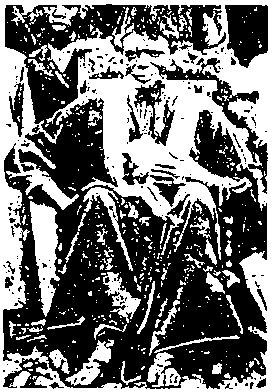
Important about this agreement however, is the fact that, it renewed Bunyoro’s interest in the lost counties. The Banyoro who had from time to time tried to persuade the colonial government to reconsider their status in the lost counties, lost patience and took action against the Baganda. They slashed crops and burnt buildings belonging to Baganda because the Baganda had continuously treated them with disdain. Runyoro had been forbidden in schools, courts, official speeches or correspondences and in the churches. As a result what had not been considered a topic of discussion became a serious issue in a spell of moment. The lost counties question formed the greatest pan of the constitution discussion prior to independence in 1962. In 1961, a three man Bunyoro delegation was allowed to give evidence before the Relationship Commission which was touring Uganda for constitutional arrangements for an independent Uganda. The Commission recommended that a referendum be held in Buyaga and Bugangaizi counties and in one other county of Bunyoro’s choice and that any area that opted for union for Bunyoro should be handed over at the time of independence. This position was vehemenlly opposed by the Baganda leaders. But the Uganda Constitutional Conference held in London later in the year, it was agreed that a Commissioner of privy council be appointed to investigate the dispute and so it was appointed and headed by Lord Molson. These developments caused excitements in the lost counties but the Baganda leaders re- affirmed their stand that those lost counties could be transferred to Bunyoro by a physical flood.
In March 1962, the Commission had finalised its report and it recommended the transfer to Bunyoro before independence of Buyaga and Bugagainzi in which the Banyoro constituted the majority. The Commission further recommended other areas should remain in Buganda but Mubende township should be administered by the Central Government. The Commission did not endorse the referendum as the relationship commission recommended on the grounds that an attempt to do so in the existence situation could only lead to intimidation and violence. The Molson Commission knew well that the Baganda would strongly Fight for secession. That is why they hoped for a generous act of statesmanship on a part of Buganda which could contribute to the stability of the protectorate on the eve of independence.
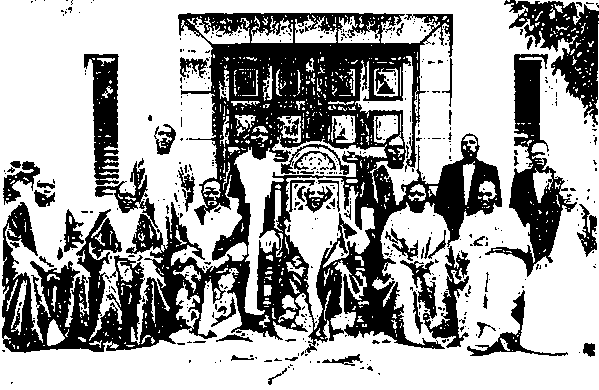
As expected, the Baganda on the publication of the report spoke heatedly of preparing for war and fighting to the last drop or their blood to retain the lost counties. But it was obvious that those lands since lime immemorial belonged to Bunyoro. The Kabaka sent telegrams rejecting the report to the secretary of state for colonies. In July, the acting Premier of Buganda said that the Kabaka’s people had been prepared to invade Bunyoro if Britain had ordered any of the lost counties to be transferred to Bunyoro (The Times, 19th July, 1962).
Faced by Buganda’s intransigence and refusal to compromise, the British Government left the problem to be settled at some future date in Independence period. It based itself on the ground that the atmosphere was quite unsuitable for holding a referendum in the short period available and that to force the issue might cause down for arrangement for independence. The British were, the trouble-causers, they caused the problem and left it unsolved. It was the Uganda Independence order in council which provided that a referendum be held in Buyaga and Bugangaizi before 9th October, 1964. Persons in the area would have three options; to continue to be part of Buganda or to return to Bunyoro or that it should become a new district of Uganda. Until the referendum day, the area was to be administered by the central government. It was hoped that after two years the area would be peaceful for a referendum. This stand was however unacceptable to the Banyoro who believed that if a referendum did not take place before the British left it would never take place in a Buganda dominated Uganda.
It was at that time that Milton Obote had become Prime Minister of Uganda after forming a coalition government with Kabaka Yekka government. Sir Edward Mutesa Kabaka of Buganda and leader K.Y. party became president. Within two months of independence, the parliament urged Prime Minister Obote to appint the administrator for the lost counties as agreed at the conference. This was done but the administrator had vaguely defined powers which left the Kabaka’s government still in effective control of the counties. Consequently, the Kabaka’s government blamed the Bunyoro-Mubende committee of what it called violent campaigns and arrested its members. Although the central government prevented full scale confrontation, a number of incidents look place during this period especially in Buyaga county, where a number of people were killed, including 9 people who were shot by the Kabaka’s men at a market place at Nduiga. These happenings had taken place as resultant effects of the Kabaka’s campaign of “show of strength” against Bunyoro which he had embarked on since early 1963. The Kabaka spent a good deal of time at his hunting lodge in Ndaiga, from where he launched an ambitious scheme of resettling thousands of Baganda ex-servicemen in the area with a view of reinforcing Buganda’s claim over the area.
However, on 4th November, 1964, a referundum was held in Buyaga and Bugangaizi and the overwhelming majority voted for transfer to Bunyoro. In Buyaga 8327 voted integration with Bunyoro and 1289 retention into B Uganda. In Bugangaizi 5275 were for Bunyoro and 2253 voted for Buganda. 112 voted for separate district. The results were announced the following day and people in the counties remained calm. On 1st January 1965, the counties of Buyaga and Bugangaizi were formerly transferred to Bunyoro and the lost county dispute was put to an end.
Throughout the struggle for the return of the lost counties and freedom from the vestiges of colonialism the Omukama served as a refined personality who united all the Banyoro to fight for a common cause. He provided a thrust forward which made all Banyoro and mostly those in the lost counties to struggle to live as free men. At the time he was to forge further unity and consolidate the kingdom, its when Milton Obote, then President of Uganda under the 1967 constitution arrangement abolished kingdoms. The Omukama of Bunyoro Kitara Sir Tito Winyi retired to Masindi from where he died four years later in 1971. With the royal regalia being carried off in the back of a lorry by some government functionaries to be stored in the basement of some government office building in Kampala, ended the monarchical tradition which had shaped Bunyoro’s past since the 9th Century AD.
References :
|
1. A.R. Dunbar: |
“History of Bunyoro – Kitara”, Oxford University Press, Nairobi, 1965. |
|
2. J.W. Nyakatura: |
“Anatomy of an African Kingdom” A History of Bunyoro-Kitara , NOK Publishers, New York 1973. |
|
3. John Beattie: |
The Nyoro Stale Oxford University Press, London, 1971. |
|
4. Carole. A. Buchanan: |
“The Kitara Complex” The Historical Tradition of Western Uganda to the 18th Century, 1973. |

